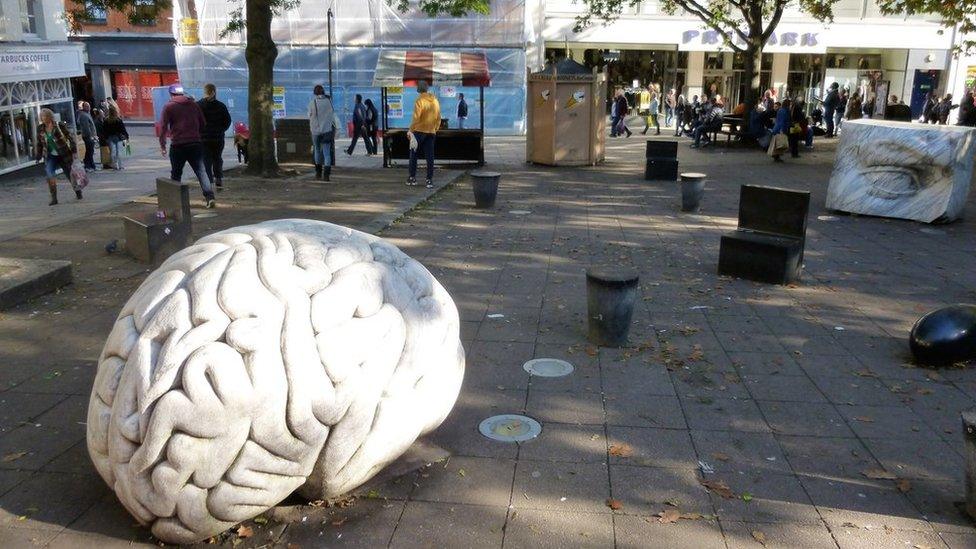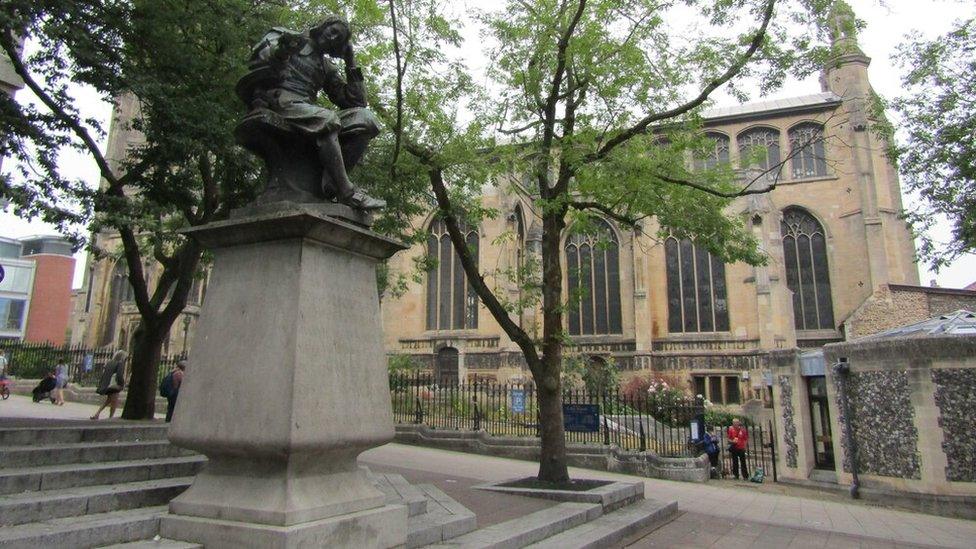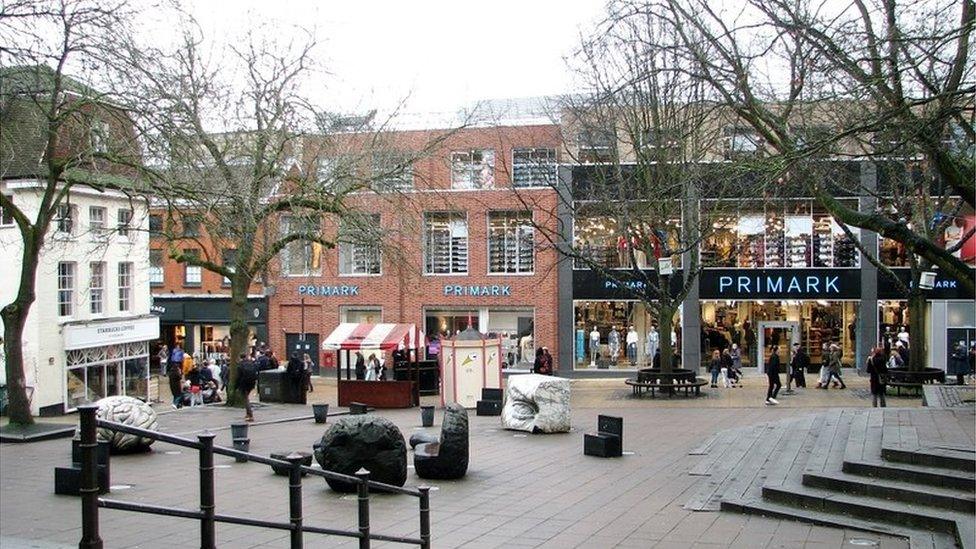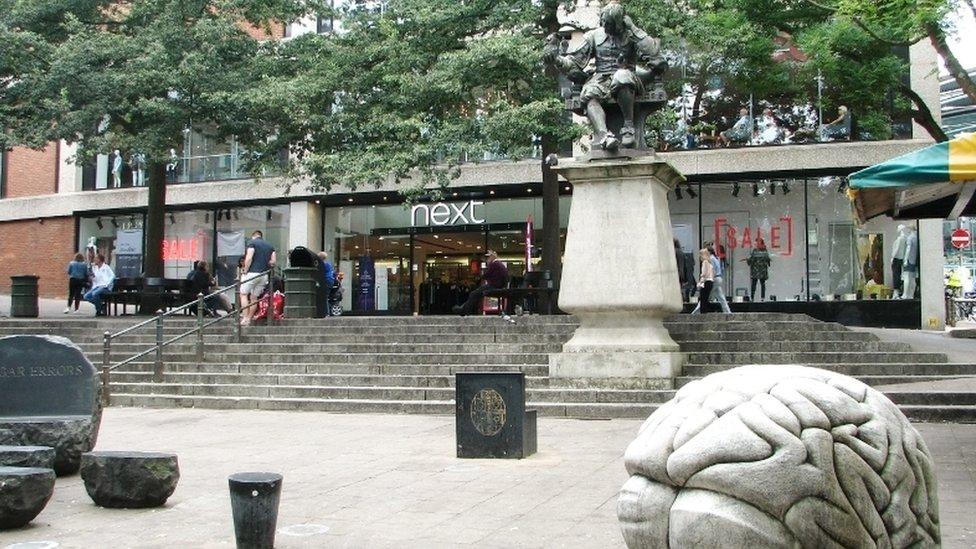Controversial brain sculpture in Norwich city centre could go
- Published

The brain sculpture along with other marble artefacts will be removed as part of changes planned for Hay Hill, Norwich
Plans have been unveiled to improve a city centre square by removing controversial sculptures.
A replica of a large brain in Hay Hill, Norwich will be removed along with other features, the city council said.
A statue of 17th Century physician, philosopher and writer Thomas Browne will remain on the site, but will be moved to a less prominent area.
The project is intended to make the area between Next and Primark a more accessible space.
The sculptures, including inscriptions on blocks of marble, were installed in 2007.
But they have proved controversial, with The Norwich Society, external among those calling for the removal.

Statue of thinker, Sir Thomas Browne, Hay Hill, Norwich
Other proposed changes include the installation of a water feature, the removal of four trees due to health and safety concerns and double height steps for informal seating, according to the Local Democracy Reporting Service.
The project is one of eight in Norwich to be funded through the Towns Fund, a government scheme that awarded £25m to Norwich in 2020.
Mike Stonard, cabinet member for inclusive and sustainable growth at Norwich City Council, said: "It's great to see these plans emerging for a really important but tired space in the city centre.
"We are really keen to hear from all user groups to help us shape them up before we commence delivery later in the year."


The sculptures in Hay Hill have proved controversial since their installation in 2007
History of Hay Hill
Hay Hill's hay market was once a place where carts would bring hay to the city for sale until attendance dwindled by the later 1950s.
In 1972 a garden and lawn surrounding Browne's statue was replaced with a paved area and water feature.
Over the years, stores, cinemas and pubs have graced its steps.
Thomas Browne was an English polymath and author who resided in Norwich from 1636 until his death in 1682.
Buried in St Peter Mancroft, Browne's skull was removed when his lead coffin was accidentally opened by workmen in 1840.
It was not re-interred in St Peter Mancroft until 1922 when it was recorded in the burial register as aged 317 years.


The artefacts including the model of a human brain are a site-specific artwork by the internationally-renowned artists Anne and Patrick Poirier
Jack Bale, who works in the area, was among those who welcomed the plans.
He described the square as looking terrible at the moment, with some of its seats broken.
"That brain is useless as well," he said, "It's weird - you can't use it or sit on it."
Amy Reeve, a Norwich student, welcomed plans for double-height steps.
"A lot of students would like a place to sit and eat in our spare time. I think this could be a good idea."
A public consultation, external on the plans is due to conclude on 24 March.

Find BBC News: East of England on Facebook, external, Instagram, external and Twitter, external. If you have a story suggestion email eastofenglandnews@bbc.co.uk, external